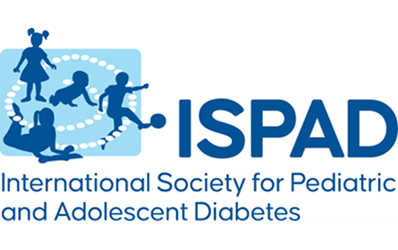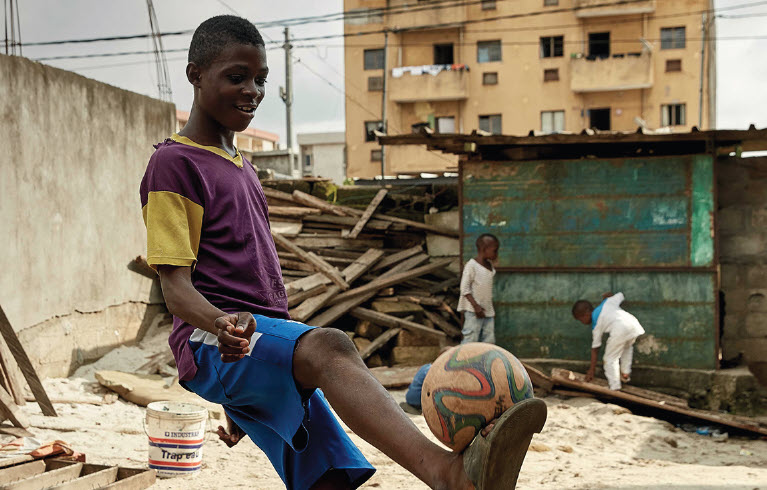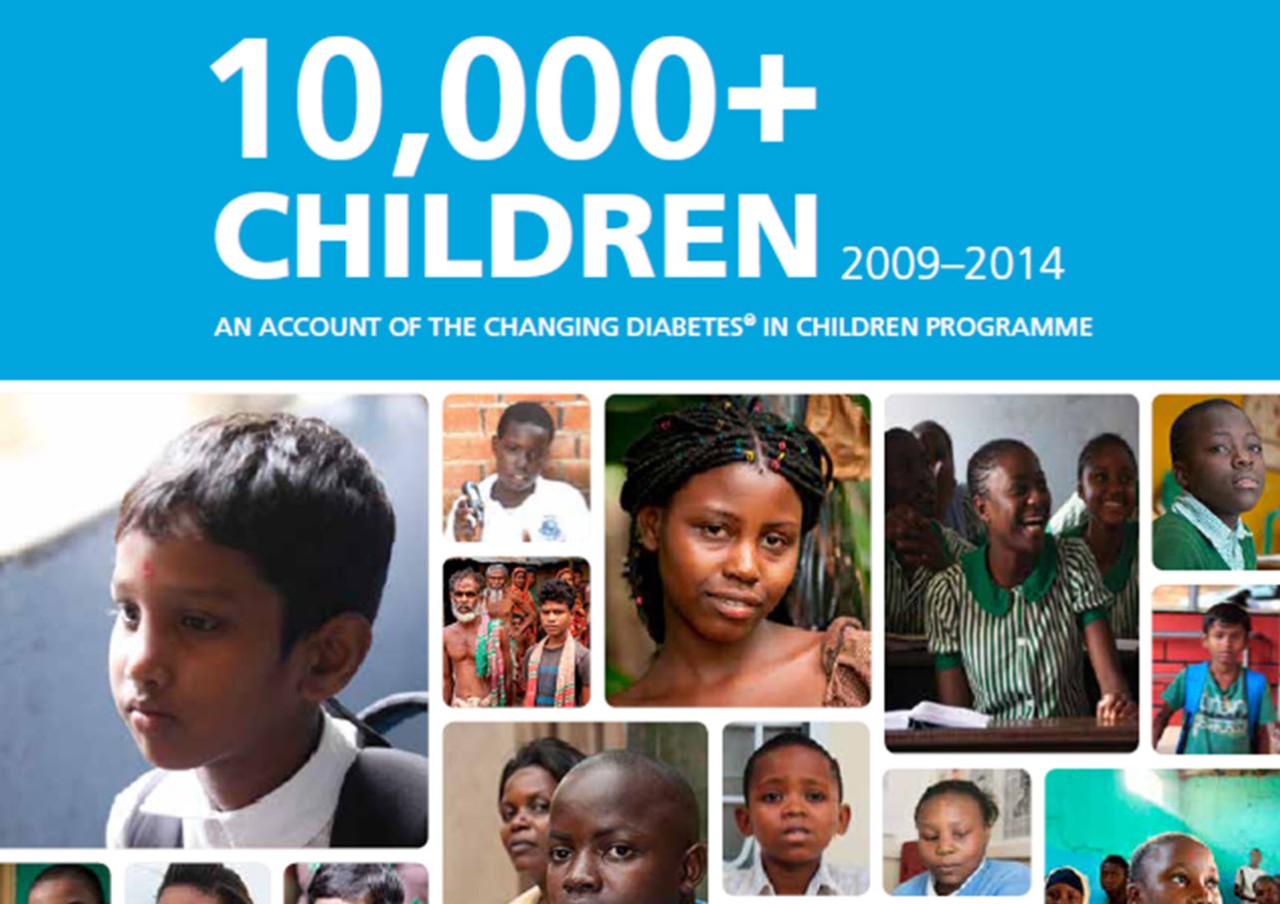No child should die from diabetes
Changing Diabetes® in Children is a public-private partnership founded in 2009. Its goal is to help provide diabetes care to children and youth with type 1 diabetes living in low and middle-income countries. This can include free life-saving medicine, blood glucose monitoring equipment and medical supplies for young people under the age of 25.
Type 1 diabetes (often referred to as childhood diabetes) is a lifelong, autoimmune condition which impairs the body’s ability to produce insulin. If left undiagnosed or untreated, excess glucose causes damage to organs which can result in severe health complications and, ultimately, in premature death. There is currently no prevention or cure and the only effective long-term treatment is multiple, daily injections of insulin.
Type 1 diabetes is one of the most common chronic childhood illnesses. The International Diabetes Federation (IDF) estimates that globally, more than 1.2 million young people under 20 years have type 1 diabetes and approximately 184,100 new cases are diagnosed each year. However, in low-resource settings, children with type 1 diabetes are often misdiagnosed or lack access to adequate healthcare services to manage their condition. Changing Diabetes® in Children was established to bridge these critical gaps in care.

Education is critical to the successful management of diabetes1.
Changing Diabetes® in Children ensures that healthcare providers are equipped with suitable materials and resources to conduct patient education.
1 Phelan H, et al. Pediatr Diabetes. 2018; 19(S27):75–83.
Diabetes Besties
The Diabetes Besties animated series helps bridge the gap in patient education materials for children living with diabetes. The episodes follow Betty and how she lives with type 1 diabetes while going to school, playing and having fun with her friends.
Episodes are available in multiple languages.
Patient handout booklet
The patient handout booklet provides diabetes education support for both children living with type 1 diabetes and their families.
Choose your preferred language and download the guidelines. Available languages (PDF):
Amharic (6 MB)
Arabic (Sudanese) (22MB)
Creole (Haitian) (16MB)
English (5 MB)
French (5 MB)
Swahili (5 MB)
A misdiagnosis or delayed diagnosis of diabetes can result in the death of a child with diabetes2.
Changing Diabetes® in Children collaborates with experts to develop and provide information about diabetes and the management of paediatric diabetes to healthcare professionals.
2 Munoz C, et al. Clinical diabetes: a publication of the American Diabetes Association. 2019;37 (3):276–281.
Healthcare professional manual
It is our hope that it will be of great use to all healthcare professionals working with children and adolescents with diabetes in developing countries.
The training manual supports education and training on important type 1 diabetes topics, including:
- Diagnosing type 1 diabetes in children
- Treating type 1 diabetes
- Talking to patients about type 1 diabetes
- The organisation of type 1 diabetes care
Available languages (PDF):
English (3 MB)
French (3 MB)
Hindi (4 MB)
Spanish (18MB)
Nurses’ Guideline booklet
The Nurses’ Guideline booklet shows how to use the diabetes dialogue posters. Based on advice from practitioners, it is suggested to use the materials together with the child over a span of visits.
Choose your preferred language and download the guidelines:
Available languages (PDF):
English (18 MB)
French (5 MB)
Swahili (5 MB)
Educational wall posters
The programme’s educational wall posters help to raise awareness of type 1 diabetes and highlight some of the important messages about living with type 1 diabetes.
Choose from four different posters:
- What is type 1 diabetes?
- The food pyramid
- The signs of type 1 diabetes
- Where on the body to inject insulin?
Choose your preferred language and download the wall posters (PDF):
Amharic (4 MB)
English (1 MB)
French (3 MB)
Swahili (1 MB)
Diabetes dialogue poster
The diabetes dialogue poster is aimed for children aged 8-12. The poster contains a set of 17 dialogue visuals developed for use in a diabetes clinic to support the conversation between the healthcare professional, the child and the child's family or guardian.
The poster covers questions like:
- Why do I need insulin?
- How much insulin should I take
- Where do I inject it? How can I measure my blood glucose
- What is hypo- and hyperglycaemia?
- How to recognise them?
Choose your preferred language and download the poster (PDF):
Amharic (6 MB)
English part 1 (4 MB)
English part 2 (3 MB)
French (6 MB)
Swahili (6 MB)
Type 1 diabetes is a complex disease, and children with the condition require accessible health facilities for regular check-ups and care3.
Changing Diabetes® in Children works with national ministries of health and local partners to establish a network of clinics and provide the best possible care coverage.
3 Brink SJ LW, et al. International Society for Pediatric and Adolescent Diabetes (ISPAD);2010.
The only effective treatment for type 1 diabetes is insulin, administered by injection3,4.
Changing Diabetes® in Children focuses on strengthening cold chains and supply mechanisms for insulin and supplies in all partner countries. The partnership also donates insulin and supplies for all the children enrolled.
3 Brink SJ LW, et al. International Society for Pediatric and Adolescent Diabetes (ISPAD);2010.
4 Danne T, et al. Pediatr Diabetes. 2018;19 Suppl 27:115–135.s








